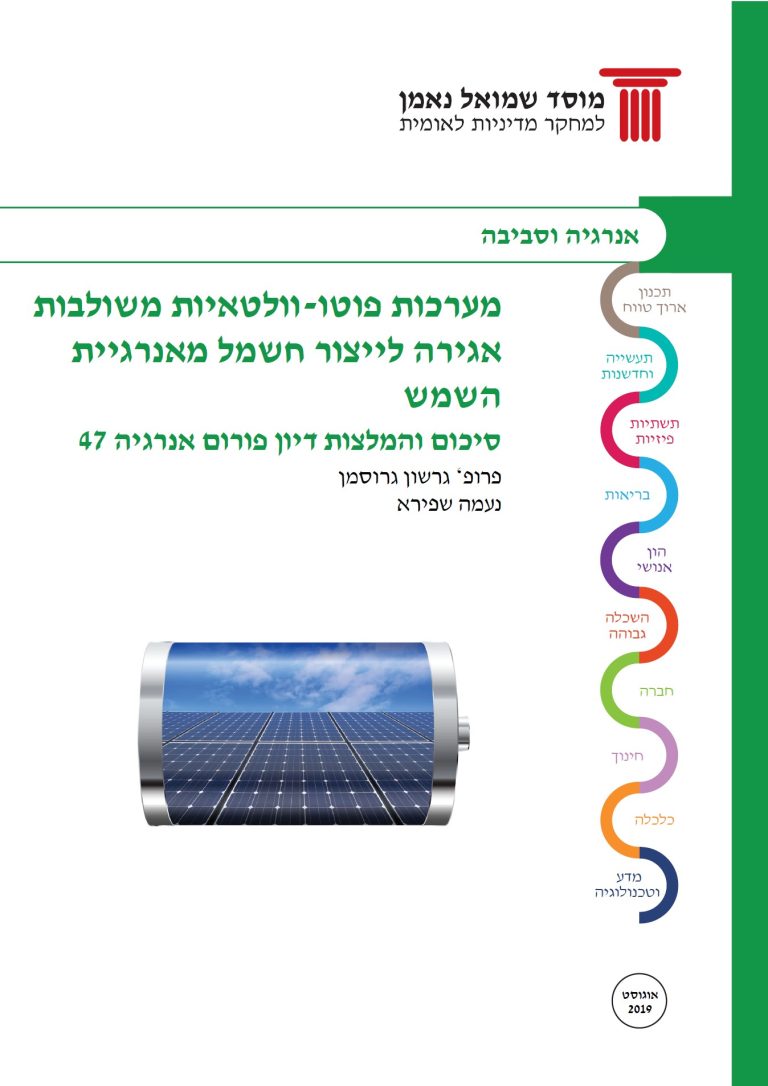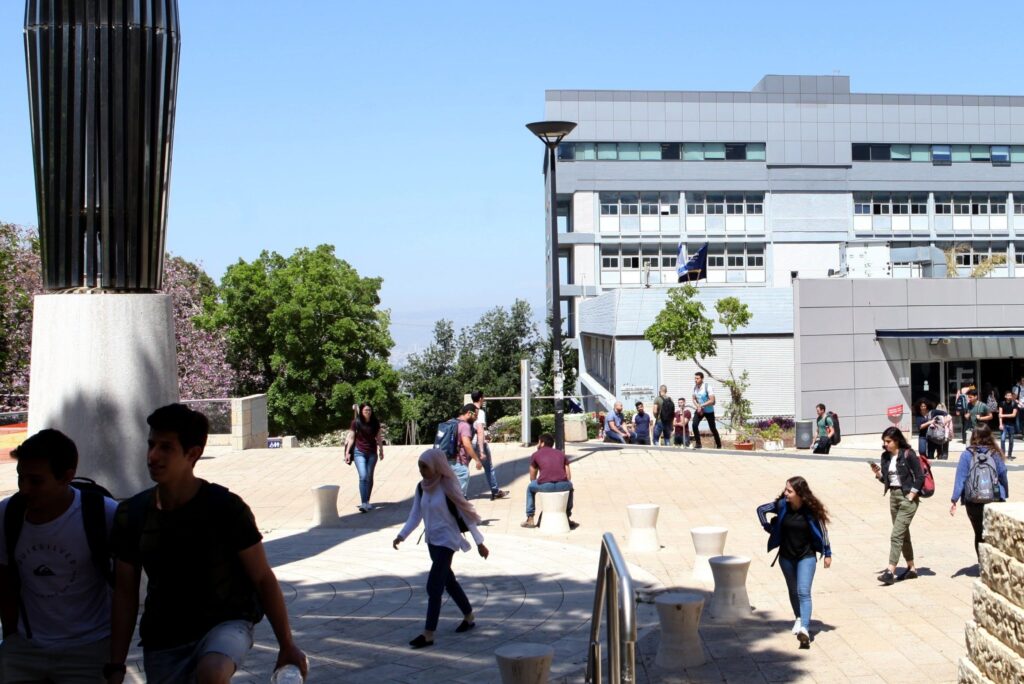In 2018, installations providing more than 100 giga-watts of solar energy were built worldwide, and the total global capacity of this energy was higher than 500 giga-watts. This volume represents an increase of 4% as compared to 2017, in comparison with an increase of 30% and 50% in the previous two years, respectively. In 2018, solar energy was the technology with the widest scope of installations (36%), double the volume of the installations of wind energy and coal-fueled power stations and equal to that of coal, natural gas, and nuclear power stations installations combined. However, the broad potential of solar energy is far from exhausted, and at the end of 2018 it provided only 2.2% of global electricity production.
The prices of solar photovoltaic (PV) energy decreased impressively in the last decade, from an average of $350 per megawatt-hour in 2009 to an average price of less than $50 in 2018 – a price that competes with wind energy and is less than that of fossil sources. In 2018, the prices of solar energy dropped by 14% as compared to 2017, and in sunny places the price of electricity dropped to about 2 cents per kWh (Southern US, Saudi Arabia, UAE, and Egypt). In general, it can be said that prices are higher in developing countries than in those having economies with stable policies. However, growth is enabled not only by low prices, and to allow it to occur, the appropriate policies and overall planning of the energy market as a whole are necessary. Many places, such as China, US, and India, even experienced a halt and even shrinkage of the solar energy market in 2018, whereas in other areas, such as Europe or Australia, an increase of 21% and 300%, respectively, was recorded. Whereas in Europe the increase can be attributed to the national targets of the EU for 2020, in China the decrease in the scope of installations can be attributed to the halting of the subsidy program in May 2018. This is probably a temporary slowdown due to the unpreparedness of the electricity grid to receive the solar energy in the southwest of the country. China, which is a world leader in terms of the volume of installations, was also the first country to recognize the strategic importance of ownership of the entire supply chain of solar production both for the industry and energy security, as well as the low cost and flexibility of cleaner electricity production. The halt in the subsidy program is an intermediate stage between excessively generous rates and an effective mechanism of economic incentives, and a similar trend is being experienced in almost all countries worldwide.
In the past, many countries implemented policies designed to encourage the penetration of renewable energy to replace fossil fuels, while providing subsidies or other economic incentives, mainly because of the issue of climate change. Today, however, in light of the decline in the prices of this energy, its extensive penetration in some areas, and the impact on the power grid, a different policy is required. Nowadays, in most of the world, the rates for electricity production at noon (peak solar production) are low and the rates for the purchase of electricity from the grid in the evening are high, which makes solar systems unviable. As a result, priority is given to maximizing self-consumption, and the means of achieving this is to add storage. The drop-in battery prices supports the development of this market.
Prices of lithium-ion batteries dropped by 85% in recent years, from an average price of $1,160 per kWh in 2010 to $176 per kWh in 2018, and according to the forecast, the price may even reach below $100 in 2024. As well as other storage technologies, Li-Ion batteries currently dominate the battery market, and this trend will be further strengthened in light of the current large investments in manufacturing plants in China, the US, Thailand, and other countries, which increase the incentive to improve the existing technology instead of adopting new technologies. However, storage today involves mainly the short term (about four hours), and some say it will not suffice to support the penetration of renewable energy on a large scale. The World Bank predicts that the demand for batteries will reach 2,800 GWh in 2040 (more than half of the electricity currently produced from renewable energy worldwide per day).
Recently, the realization that the integration of two elements, photovoltaic energy systems and storage, changes to the picture has been augmented. In addition to the possibility of reduced prices per kWh, it also provides many benefits to the electricity grid: batteries installed in the world today are used primarily for frequency stabilization (about half of the installed capacity), as well as a reserve for production capacity, managing the electricity account, peak shaving, and more.
The dramatic decline in the prices of photovoltaic systems over the past decade has brought a fundamental change in the field of electricity production from renewable energy sources. After a long period during which the price of photovoltaic electricity was too high to allow its extensive use, today it is a source that can compete with that of power plants, and on a national grid scale. Solar energy is a desirable but not stable source of energy, and does not always deliver the power at the time at which it is needed. The combination of photovoltaic systems with storage in fact constitutes a new renewable source of energy, which provides a solution for a reliable and continuous power supply according to need. The addition of storage to solar systems is not only a solution to the issue of the discrepancy between the times of supply and consumption, but also has the potential to add significant value, for various stakeholders, at different times of the day and year. The same battery used for domestic purposes can also be used in the distribution and transmission grids for backup, frequency stabilization on the grid, and more.
Recommendations:
- It is recommended that facilities that combine solar systems and storage should be allowed to enjoy the benefit of Net Energy Metering: owners of combined facilities can feed energy to the grid and receive credit for the whole amount (in Israel today it is not permitted for batteries to feed power into the grid).
- It is recommended that regulations that encourage storage be devised. Currently, the matter is not regulated according to the standards of the Electricity Authority: there are no incentives or penalties for efficient or inefficient use in accordance with the needs of the power grid (like, for example, the Demand Charge mechanism). There are also no economic incentives for the development of storage, and the consumers are unable to deal with their excess production. Recently (August 2019), the Electricity Authority published a draft regulation for public inspection (hearing) on this subject.
- It is recommended that a storage-encouraging regulatory mechanism be developed that is suitable for sustainable end-of-life treatment of used batteries.
- It is recommended that the subject of virtual stations through appropriate regulation for this purpose (feeding energy into the grid, purchasing electricity at excess rates, etc.) be developed. In the virtual stations, the management system ensures battery charging at times of excess production and supply to the grid in times of excess demand. The investment of the system manager in such solutions is one tenth of that in physical infrastructures, and thus, the common financial outline is partial support or a system subsidy for using them for a few hours a year. This is profitable for both parties and allows the process of expanding or upgrading infrastructure (building power stations, transmission lines, substations, and more) to be avoided.












